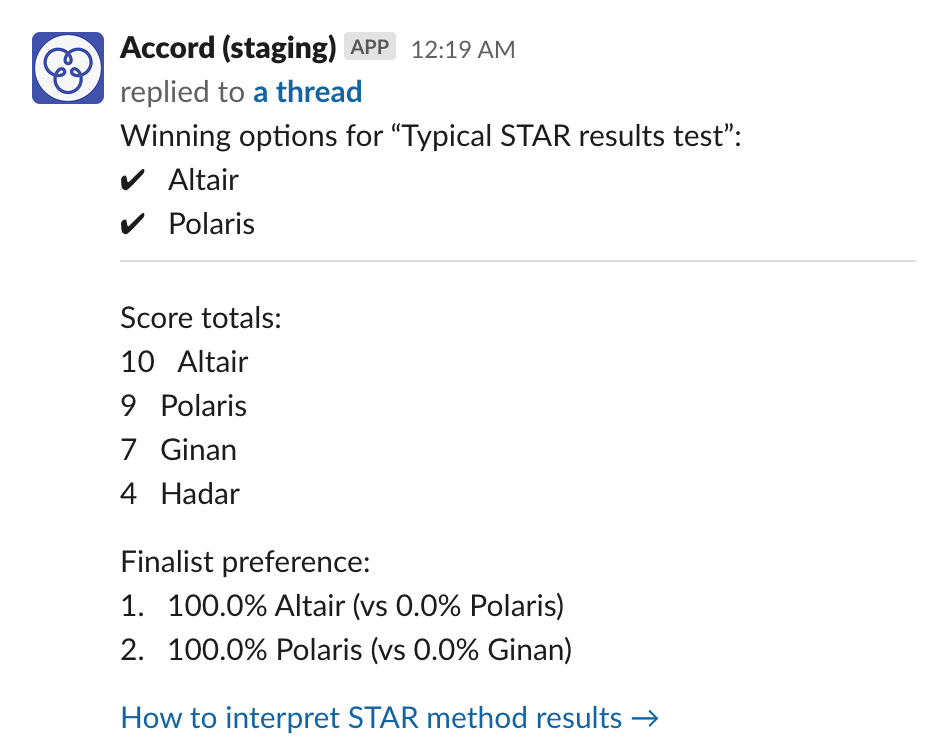Interpreting STAR results
STAR (“score then automatic runoffs”) voting is a method which counts votes in two phases. The results of both phases are summarized in Accord’s results message.
How votes are counted in the STAR method
First, the scores voters gave to each option are summed exactly as in score voting.
Next, the top scoring options are evaluated in one or more condorcet contests where votes are checked again to determine which option was preferred over others most often; for each vote, scores for each pair of options in a contest are compared, and the option scored higher is considered preferred.
The option voters preferred the most in a contest is selected as a winner. If multiple options have the same degree of preference, the one with the greatest score sum from the first phase is selected. If both the original score sum and the degree of preference are the same for more than one option, then they are tied in both phases and win together.
How Accord summarizes STAR results
When a STAR decision closes, Accord will post a message like this one:

As with all other decisions, the message starts by listing the options that won.
Next, the message lists the sum of scores each option received the same way as in score voting.
Finally, the message lists the outcome of each condorcet contest in order. In case of a tie in this phase, it’s possible the same number will appear twice. For each contest, the option that won comes first, followed by the other options which competed. Each option is shown with the option's name after the percent of the total positive preference recorded in the contest that that option received.
Further reading
- STAR voting on Wikipedia
- Accord’s STAR implementation is similar to the voting method advocated by STAR Voting Action.